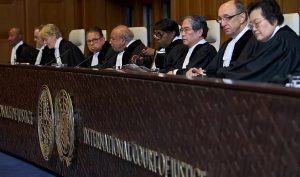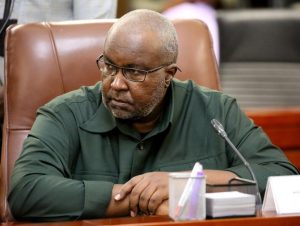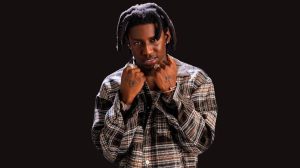
As Donald Trump eyes a potential return to power, speculation about his influence on the future of the U.S. Supreme Court has intensified. With several jurists positioning themselves for a possible nomination, a competition for the president’s attention is unfolding, blending bold public statements, combative court opinions, and even champagne toasts. These potential nominees, many of whom were appointed by Trump to lower courts, are making their cases for a seat on the high court if an opportunity arises during his second term.
The race for a spot on the Supreme Court is heating up, with judges such as U.S. Circuit Judges Andrew Oldham, Neomi Rao, and James Ho all actively seeking attention for their conservative stances. Although no vacancies currently exist on the Supreme Court, these judges are taking steps to raise their profiles among conservative circles, anticipating that a second Trump presidency may bring opportunities to further shape the judiciary.
One key player in this narrative is Judge Andrew Oldham, a Trump appointee to the Fifth Circuit Court of Appeals, who recently made headlines for his remarks condemning “political prosecutions.” Speaking at a Federalist Society convention, Oldham criticized the use of prosecutions in the midst of political campaigns, a comment that appeared to align with Trump’s own legal troubles and the cases brought against him. While he did not name Trump directly, the context was unmistakable, especially in light of the criminal cases surrounding the former president.
Oldham’s comments reflect the broader trend among Trump-appointed judges to align themselves with the president’s views on key political and legal issues. With many of these judges in their late 40s and early 50s, their tenure on the bench could stretch for decades if they were to be appointed to the Supreme Court. Given that Trump has already secured three Supreme Court appointments—Neil Gorsuch, Brett Kavanaugh, and Amy Coney Barrett—his second term could potentially provide him with the opportunity to nominate one or two younger justices, cementing a lasting conservative majority.
At the same Federalist Society event, Judge Neomi Rao also garnered attention for her celebratory toast to the Supreme Court’s rulings earlier this year that curtailed the power of federal agencies. Rao’s public display of support for these decisions signaled her alignment with conservative ideals, adding fuel to speculation about her ambitions for a Supreme Court nomination.
Similarly, Judge James Ho, another Trump appointee to the Fifth Circuit, has been making headlines with his views on birthright citizenship and national sovereignty. Ho’s statements, including his assertion that birthright citizenship does not apply in cases of “war” or “invasion,” have drawn attention for their alignment with Trump’s own controversial positions on immigration. Ho’s outspoken approach to these issues has further solidified his standing as a potential Supreme Court candidate.
The rise of these judges highlights the growing trend of outspoken conservatism within the judiciary, particularly among those appointed by Trump. Jake Faleschini, the justice program director at the liberal Alliance for Justice, noted that judges like Oldham, Rao, and Ho are engaging in what amounts to a form of public campaigning for the high court, a shift from the more restrained approach taken by past potential nominees. Historically, judges seeking a Supreme Court seat would avoid making controversial public statements that could be used against them during confirmation hearings. But in today’s polarized political climate, judges are increasingly staking out bold positions, signaling their readiness to take on the cultural and political battles that shape the conservative movement.
Meanwhile, the speculation over a potential Supreme Court vacancy has turned to two conservative stalwarts, Justices Clarence Thomas and Samuel Alito. Both men, in their 70s, are seen as possible retirees, which could open the door for Trump to appoint replacements. Although sources close to Justice Alito have dismissed rumors of his retirement, the possibility remains that one or both justices could step down during Trump’s second term, providing him with another chance to reshape the court.
While the Trump administration is not actively vetting Supreme Court candidates at this time, the president’s track record of appointing judges with strong conservative credentials suggests that any future nominations will likely follow a similar ideological trajectory. Trump’s preference for “fearless” judges who are unafraid to take bold positions is likely to influence his choices for the high court. According to John P. Collins Jr., a law professor at George Washington University, Trump’s first-term picks were more establishment figures, while in his second term, he may seek out judges who are willing to engage in the cultural and ideological battles of the day.
Another potential Supreme Court candidate, Judge Amul Thapar, has also raised his profile with his outspoken criticism of law schools for not embracing originalism, a legal philosophy favored by conservative justices. Thapar, who serves on the Sixth Circuit Court of Appeals, has called for law schools to prioritize teaching originalism, arguing that universities should face consequences if they fail to do so. His stance on constitutional interpretation further solidifies his place as a potential Supreme Court nominee in a Trump administration.
As the political and legal landscape evolves, the jockeying for a Supreme Court seat continues, with several prominent conservative judges positioning themselves for a future nomination. Whether through public speeches, strategic opinions, or public displays of support for conservative ideals, these judges are making it clear that they are ready to join the highest court in the land—if the opportunity arises.







